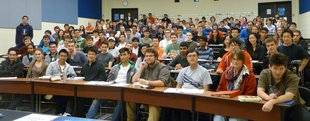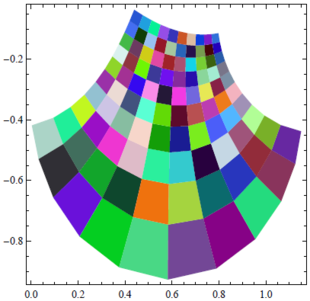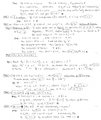12-240/Classnotes for Thursday September 13: Difference between revisions
From Drorbn
Jump to navigationJump to search
No edit summary |
|||
| Line 31: | Line 31: | ||
<math>\forall \!\,</math> a, b, c <math>\in \!\,</math> F, a.(b+c)=a.b + a.c |
<math>\forall \!\,</math> a, b, c <math>\in \!\,</math> F, a.(b+c)=a.b + a.c |
||
== Examples == |
== Examples == |
||
== Lecture Notes, upload by [[User:Starash|Starash]] == |
|||
<gallery> |
|||
Image:Mat240 120913 p1.jpg|Page 1 |
|||
Image:Mat240 120913 p2.jpg|Page 2 |
|||
</gallery> |
|||
Revision as of 20:21, 13 September 2012
| |||||||||||||||||||||||||||||||||||||||||||||||||||||||||
In the second day of the class, the professor continues on the definition of a field.
Definition of a field
Combined with a part from the first class, we have a complete definition as follow:
A field is a set "F' with two binary operations +,x defind on it, and two special elements 0 ≠ 1 such that
F1: commutative law
a, b F: a+b=b+a and a.b=b.a
F2: associative law
a, b, c F: (a+b)+c=a+(b+c) and (a.b).c= a.(b.c)
F3: the existence of identity elements
a F, a+o=a and a.1=a
F4: existence of inverses
a F , F such that a+c=o and a.d=1
F5: contributive law
a, b, c F, a.(b+c)=a.b + a.c






